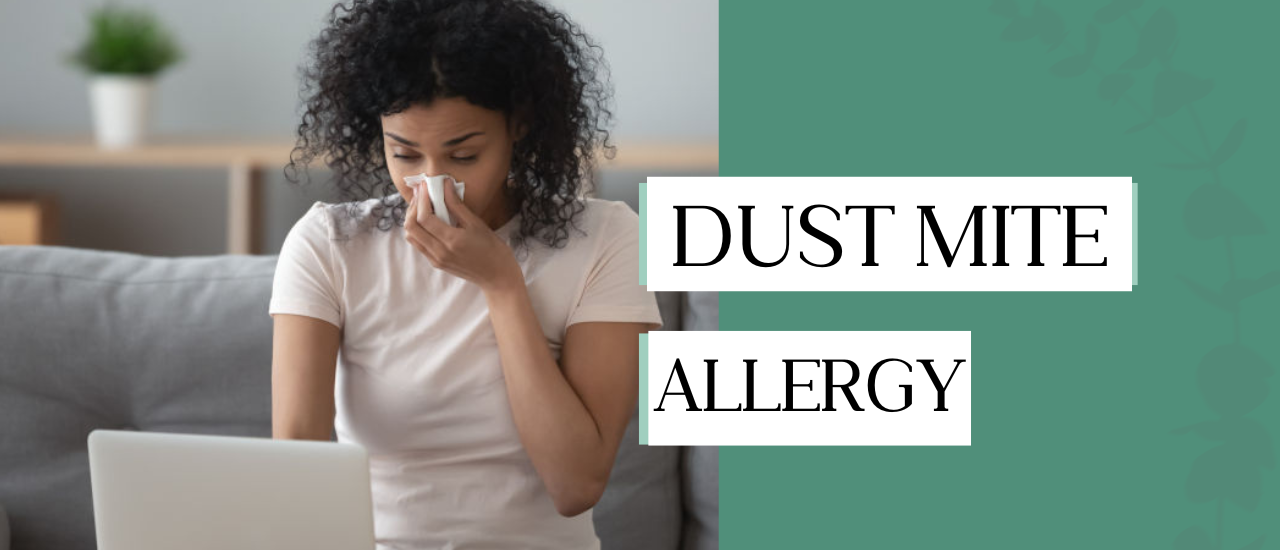

wordpress-seo domain was triggered too early. This is usually an indicator for some code in the plugin or theme running too early. Translations should be loaded at the init action or later. Please see Debugging in WordPress for more information. (This message was added in version 6.7.0.) in /home/sehatnagar.com/public_html/wp-includes/functions.php on line 6114
An allergic reaction to microscopic bugs that frequently reside in household dust is known as a dust mite allergy. Insects and spiders share a kinship with dust mites. To the human eye, however, they are too small to see. They consume the dead skin cells on your body that are found in the dust and in furnishings, carpet, and bed. Proteins can be found in the feces and dead bodies of dust mites. These compounds, often known as allergens, are mostly benign. Your immune system reacts to expel them from your body because it perceives them as dangerous “invaders,” similar to germs or viruses. Dust mites consume organic material, such as skin flakes. These particles can induce allergy symptoms including sneezing, coughing, and runny nose in people who are sensitive to dust mites, including when they are breathed in.
Although dust can make everyone sneeze, only a small percentage of people truly experience the immunological reactions that characterize a dust mite allergy. The following symptoms of dust mite allergy brought on by nasal inflammation:
Your immune system produces antibodies when you have allergies, mistaking your specific allergen for something hazardous even though it is not. Your immune system causes an inflammatory reaction in your nasal passages or lungs when you are exposed to the allergen. Dust mite residue causes severe reactions in people with dust mite allergies. Household dust is made up of a variety of substances, such as dust mites, mould spores, pet dander, insect fragments, and more.
Cockroaches are common in all kinds of homes and communities. When exposed to cockroaches, some people get allergic problems. Household dust frequently contains tiny cockroach-derived particles, which may actually be the root of a dust allergy.
Mold may develop almost anywhere, including in home dust particles. Allergies to it can develop inside after exposure. You might not be allergic to all of the many distinct types of mould that exist. Various forms of mold can cause allergies in different persons, and only some molds can. One of three major groups is often where mold belongs.
When it comes to allergies, you might consider pollen to be an outdoor problem. However, it can enter a house through open windows, and you could bring it in on your clothes, shoes, or hair. Pollen can trigger allergy problems when it enters the home and drifts about like other dust particles. The most frequent sources of pollen are typically grasses and ragweed.
The most typical cause of dust allergies may be these little bugs. More specifically, allergies are brought on by the protein in their excrement. Dust mites are parasites that dwell on carpet, upholstered furniture, mattresses, beds, and curtains and feed on human skin flakes. These little pests have the potential to be extremely miserable.
Patients with allergies may experience issues with animals in a variety of ways. When coupled with household dust, their skin flakes, saliva, and urine might trigger an allergic reaction. Feathers and bird droppings can become lodged in household dust in homes where there are birds, which can be problematic for those who are allergic to them.
Your chance of getting a dust mite allergy rises as a result of the following factors:
They are among the most prevalent indoor allergens, and year-round symptoms are possible. Dust mite allergies can also set off asthma attacks and exacerbate eczema symptoms in addition to causing allergic rhinitis.
The sacs or close to the end of the airways are where particles that avoid elimination in the nose or throat prefer to settle. But if there is a lot of dust around, the macrophage system could malfunction. The accumulation of dust macrophages and dust particles in the lung tissues harms the lungs.
People with asthma, those who are allergic to mites, and those who are sensitive to them may experience health effects from ongoing exposure to dust mites at home. These allergens have the potential to cause asthma attacks as well as mild to severe allergic reactions. Sneezing, watery eyes, and the occasional runny nose are some symptoms of a moderate illness.
Between May and October, when house dust mites are most active in reproducing, allergen levels are at their maximum. The majority of the mites die during the winter, but heating systems stir up the dust that contains allergens. This frequently leads to the symptoms that afflicted people suffer all year round getting worse in the winter.
The advantages of green tea for our immune system and metabolism are well recognized. The nose also aids in calming the inflammation.
Particularly in southern Asia, turmeric is well-known for its curative and immunity-boosting properties. It can be taken with heated milk to boost defenses.
Another fantastic superfood that offers many advantages is honey. Its anti-inflammatory qualities aid in symptom reduction.
If you want to boost your immunity or lessen the symptoms of allergies, cinnamon, which is comparable to honey, is a terrific addition to your diet.
Yogurt and other probiotic-rich meals give the body the tools it needs to combat many types of enduring radicals and infection-causing germs. Additionally, it possesses anti-inflammatory qualities.
What Is Bed Bug Bites Reactions & Its Different Types
Fingernail And Toenail Fungus Problems
Know About The Importance And Benefits Of Sleep